Engineering optimal elastic webbing for fetal monitoring applications requires precise material selection and manufacturing techniques to ensure consistent sensor placement during extended monitoring periods. As specialist webbing manufacturers, we understand the critical balance between elasticity, durability, and biocompatibility that medical device developers require for their monitoring solutions.
The primary elastic webbing materials used in fetal monitoring straps are medical-grade polyester-nylon blends with controlled elasticity ratios of 15-25%. These specialized webbings feature biocompatible compositions that maintain consistent sensor contact while accommodating patient movement, with fast-running weave structures providing superior durability and precise tension control required for accurate monitoring in clinical settings.
Discover key specs, manufacturing methods, and custom options for elastic webbing in fetal monitoring to support informed medical product development decisions.
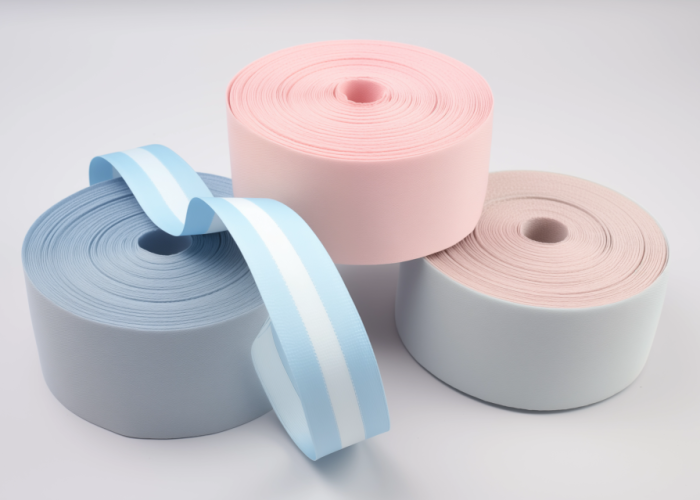

Webbing manufacturing expert with 15+ years of experience helping product developers build high-performance straps for industrial, medical, and outdoor use.
Medical-grade elastic webbing for fetal monitoring straps requires biocompatibility, 15-25% controlled elasticity, minimum 200N tensile strength, and dimensional stability under repeated stretching.
Medical-grade elasticity requires precise engineering of both material composition and weave structure. The molecular structure of specialized polyester-nylon blends delivers controlled elasticity that returns to its original dimensions after repeated stretching cycles. This recovery property is essential in maintaining consistent tension around the abdomen, as inconsistent pressure can cause signal degradation or patient discomfort.
Durability factors represent another critical consideration in material selection. The webbing must withstand multiple cleaning cycles using hospital-grade solutions without degradation. Fast-running weave constructions demonstrate superior resistance to cleaning agents due to their tighter yarn spacing, translating to longer service life in demanding clinical environments.
Weight considerations significantly impact patient comfort during extended monitoring. Advanced manufacturing techniques produce ultralight elastic webbing (30-40g/m²) that delivers required performance while minimizing pressure on sensitive skin. Modern polyester-nylon blends achieve this optimal weight-performance balance through advanced fiber engineering rather than compromising structural integrity.
Elastic webbing improves fetal monitoring by maintaining consistent sensor contact through controlled tension while enhancing comfort with movement-accommodating stretch zones.
The precision of sensor placement directly correlates with monitoring accuracy. Elastic webbing’s ability to maintain consistent pressure across irregular surface contours ensures transducers remain optimally positioned regardless of patient movements. Studies indicate that proper sensor contact delivers significantly clearer signal reception, reducing false readings during critical monitoring periods.
Patient movement accommodation represents a significant advantage of properly engineered elastic materials. The programmed stretch zones adapt to natural body movements and breathing patterns without displacing sensors or creating uncomfortable binding sensations. The elastic recovery properties ensure the webbing returns to original tension parameters after stretching, maintaining consistent monitoring conditions.
Temperature regulation capabilities represent an often-overlooked benefit of advanced elastic webbing. The engineered porosity of fast-running weave structures facilitates air circulation between the webbing and skin, reducing heat buildup during extended wear. This breathability significantly improves patient comfort while reducing potential skin irritation from prolonged moisture contact.
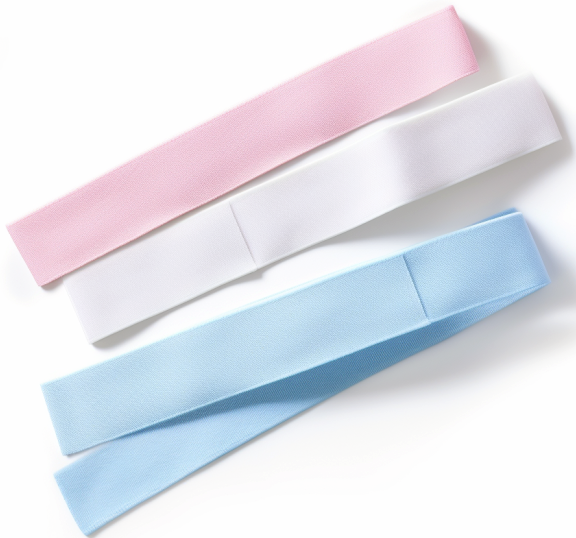
The optimal thickness for fetal monitoring straps is 1.5-2.5mm, with 2.0mm being the industry standard that balances support with flexibility.
Material density directly influences performance characteristics, with the 2.0mm standard providing optimal tensile strength while maintaining necessary flexibility. Manufacturing processes control fiber density to achieve specific parameters, with fast-running weave techniques delivering more consistent thickness tolerances than traditional methods. This precision ensures performance remains consistent throughout the product lifecycle.
Edge finishing significantly influences both comfort and durability. The thickness at strap edges typically tapers by 10-15% to eliminate harsh transition lines that could cause pressure marks. This tapering requires specialized edge-weaving techniques that maintain structural integrity while creating more comfortable contact surfaces. The reduced edge thickness improves conformability around body contours without compromising central strength.
Cross-sectional uniformity represents a critical quality factor, with thickness variations potentially causing inconsistent pressure distribution and sensor instability. Advanced manufacturing maintains thickness tolerances within ±0.2mm across the entire width, ensuring consistent performance characteristics. This dimensional stability directly translates to more reliable sensor data, particularly during extended monitoring sessions.
Fetal monitoring strap materials must meet ISO 10993 biocompatibility standards, be latex-free, pass cytotoxicity testing, and withstand hospital disinfection protocols.
Biocompatibility represents the foundational safety requirement for any material in direct patient contact. Medical-grade elastic webbing undergoes comprehensive testing to ensure freedom from substances that could cause adverse reactions. ISO 10993 establishes specific protocols for evaluating material safety, with particular emphasis on extended skin contact applications like monitoring straps.
Chemical residue limitations extend beyond base material composition to include manufacturing process controls that prevent contamination. Medical-grade webbing production incorporates specialized washing and heat-setting processes that remove potential contaminants before final packaging. These processes must meet verification standards, with residual chemical levels typically limited to below 100 parts per million.
Disinfection compatibility represents a practical safety requirement for reusable components. The webbing must withstand repeated exposure to hospital-grade disinfectants without degradation or leaching of materials. Testing includes accelerated aging with common disinfection agents to verify long-term safety and performance stability throughout multiple use cycles.
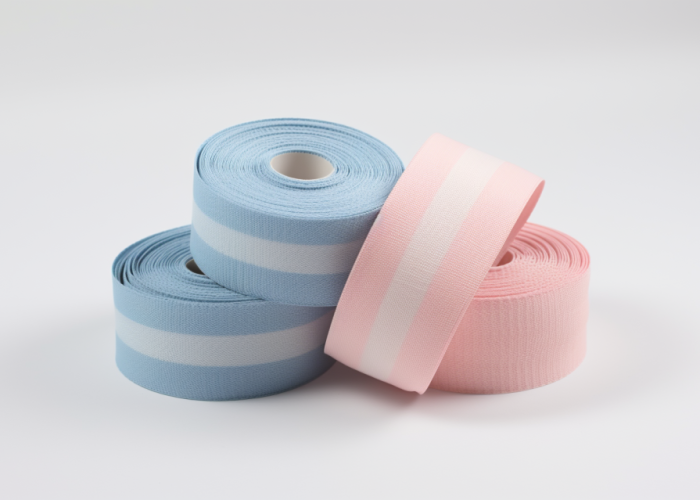
Fast-running weave manufacturing produces fetal monitoring straps with 25% higher tensile strength, better dimensional stability, and more consistent elasticity than traditional weaving methods.
Weave pattern engineering directly influences elastic behavior, with different structural configurations producing specific performance characteristics. Fast-running weave techniques create precisely controlled elastic zones that maintain consistent tension across the entire width, eliminating inconsistent stretching found in traditional methods. This uniformity ensures sensors remain properly positioned regardless of patient movement, improving signal reliability during critical monitoring periods.
Yarn tension control during manufacturing represents a critical factor in producing reliable elastic webbing. Advanced production equipment maintains precise tension parameters throughout weaving, resulting in consistent properties across production batches. Fast-running weave systems typically maintain tension variations within ±3%, compared to 10-15% variation in traditional methods, directly improving final product consistency.
Surface finishing processes provide the final performance elements, with techniques such as controlled heat-setting creating materials that maintain dimensional stability after repeated stretching. These finishing operations lock structural elements into their engineered configuration, ensuring elastic recovery properties remain consistent throughout the product lifecycle while preventing contaminant introduction.
Customization options for fetal monitoring straps include color-coding systems, jacquard-woven logos (up to 300 DPI), width specifications (25-75mm), and specialized edge treatments.
Color integration provides both aesthetic branding and functional benefits. Custom-colored elastic webbing can incorporate brand identity while creating practical color-coding systems for different strap sizes or applications. Advanced dyeing processes ensure colorfastness throughout multiple cleaning cycles, maintaining visual consistency without compromising material performance or biocompatibility.
Pattern customization through jacquard weaving enables incorporation of logos, text, and complex designs directly into the webbing structure. This technique creates durable branding elements without inks or coatings that could contact patient skin. The structural integration ensures designs maintain integrity during stretching and recovery, preserving brand visibility regardless of positioning during use.
Dimensional customization allows manufacturers to specify exact width, thickness, and elasticity parameters matching specific monitoring system requirements. These customized specifications ensure optimal performance with particular sensor types, creating perfectly matched component systems rather than adapting to standard dimensions. Minimum order quantities typically start at 500 meters for custom designs.
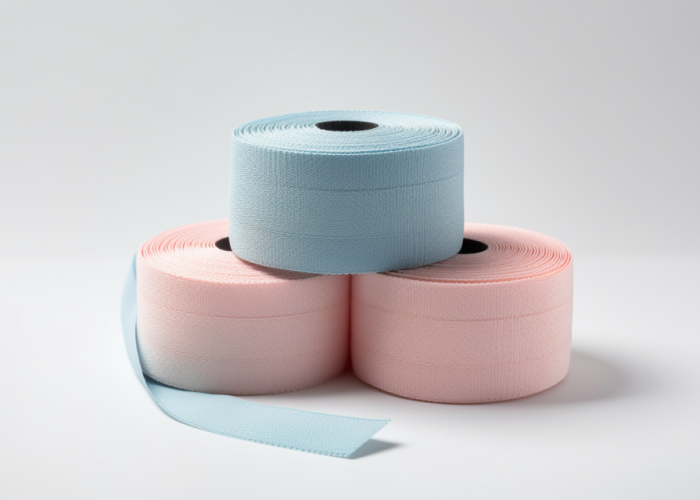
Premium elastic webbing extends fetal monitoring strap service life by 40-60% despite 15-25% higher initial cost, significantly reducing total ownership costs through fewer replacements.
Durability factors represent the primary cost-effectiveness driver, with premium elastic webbing demonstrating significantly longer service life. The enhanced structural integrity maintains essential performance characteristics throughout numerous cleaning and stretching cycles, extending replacement intervals and reducing overall program costs. This advantage becomes particularly significant in high-volume monitoring environments where frequent replacement creates both material costs and administrative burden.
Cleaning compatibility directly impacts operational costs for reusable components. Premium elastic webbing withstands aggressive disinfection protocols without performance degradation, maintaining both functional properties and appearance through numerous cleaning cycles. This compatibility eliminates premature replacement often required when standard materials begin showing cleaning-related deterioration such as stiffening or reduced elasticity.
Quality consistency across production batches represents an often-overlooked cost factor. Premium elastic webbing manufactured under stringent controls delivers consistent specifications throughout production runs, eliminating “hidden costs” associated with variable quality materials. This consistency reduces inspection requirements, improves production efficiency, and eliminates risks from inconsistent component performance, often outweighing the incremental cost difference between standard and premium options.
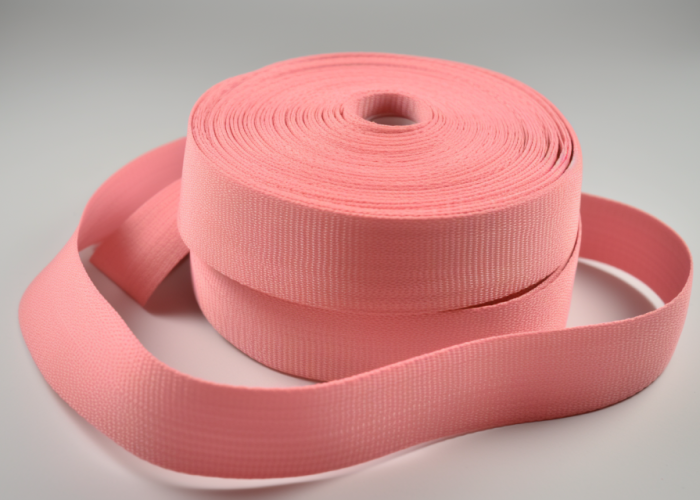
Medical-grade elastic webbing for fetal monitoring applications demands precision manufacturing and specialized material engineering. As custom webbing manufacturers, we provide comprehensive technical guidance, material selection expertise, and tailored solutions for your specific monitoring requirements. From optimized elasticity profiles to customized branding elements, our manufacturing capabilities can transform your monitoring strap specifications into high-performance medical components that enhance both clinical outcomes and patient experience.
Premium elastic webbing for fetal monitoring straps typically maintains full performance specifications for 150-200 clinical use cycles. This represents approximately 9-12 months of regular hospital use with proper cleaning and storage procedures, though actual lifespan varies based on cleaning protocols, usage patterns, and storage conditions.
Fast-running weave construction increases fetal monitoring strap durability by creating uniform tension distribution and reinforced yarn intersections that resist degradation from repeated stretching. This manufacturing technique reduces stress concentration points that typically cause premature failure, resulting in significantly longer service life compared to traditional weaving methods.
Elastic fetal monitoring straps provide consistent sensor contact during patient movement, distribute pressure more evenly across contact surfaces, and accommodate different body types with a single size. These advantages translate to more reliable monitoring data, improved patient comfort, and simplified inventory management compared to rigid alternatives.
Medical-grade elastic webbing must comply with ISO 10993 biocompatibility standards, meet FDA requirements for skin-contact materials, and satisfy institutional infection control protocols. Manufacturing facilities typically maintain ISO 13485 certification for medical device components, ensuring consistent quality control throughout production.
Material composition directly impacts comfort through factors like breathability, moisture management, and edge softness, while safety depends on biocompatibility certification and freedom from allergenic compounds. Premium elastic webbing utilizes specialized fiber blends that optimize these characteristics while maintaining necessary performance properties.
The most clinically important customization options include engineered elasticity profiles matching specific sensor requirements, optimized width dimensions for stable positioning, and color-coding systems for quick size identification. These functional customizations significantly impact monitoring effectiveness while branding elements enhance product recognition and differentiation.